Adding SCIM application in Azure
After creating an access token, you should create the SCIM application in Microsoft Entra ID. To learn more about using SCIM with Azure AD, refer to the Microsoft Guide.
Before you begin

Steps
- On the left pane, navigate to Microsoft Entra ID > Enterprise Applications.
-
On the Enterprise Applications page, navigate to All applications > New application.
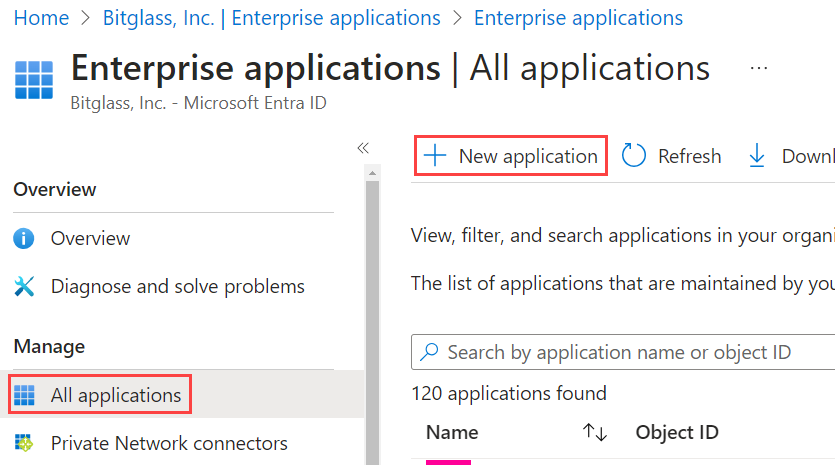
- On the Browse Microsoft Entra Gallery page, click Create your own application.
-
On the Create your own application dialog that appears on the right:
- Enter a recognizable application name.
- Ensure Integrate any other application you don't find in the gallery (Non-gallery) is selected.
- Click Create. It may take a few moments for the app to be created.
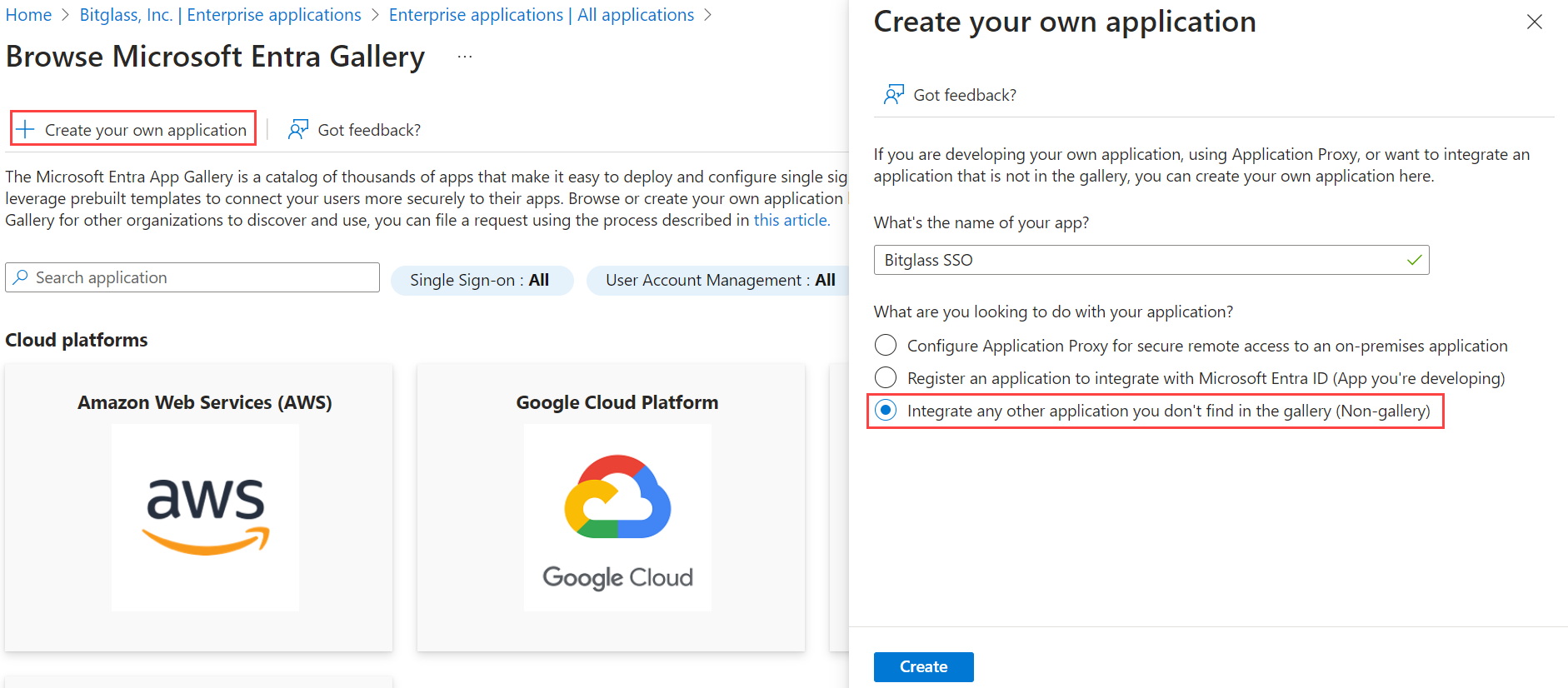
- On the resulting page, select Provisioning from the left pane and then select Get started to automatically create, update, and delete accounts when users join, leave, and move within your organization.
- On the Provisioning page, select Automatic from the Provisioning Mode drop-down.
-
Expand the Admin Credentials section and enter the tenant URL for the Forcepoint Data Security Cloud | SSE portal that you are connecting to and
then enter the Access Token that you generated during the SCIM OAuth Setup and test your connection.
- Tenant URL: https://portal.bitglass.com/api/bitglassapi/v2/scim/
-
Expand the Settings section, select the Send an email notification when a failure occurs checkbox and then enter an email to notify
you if a failure occurs.
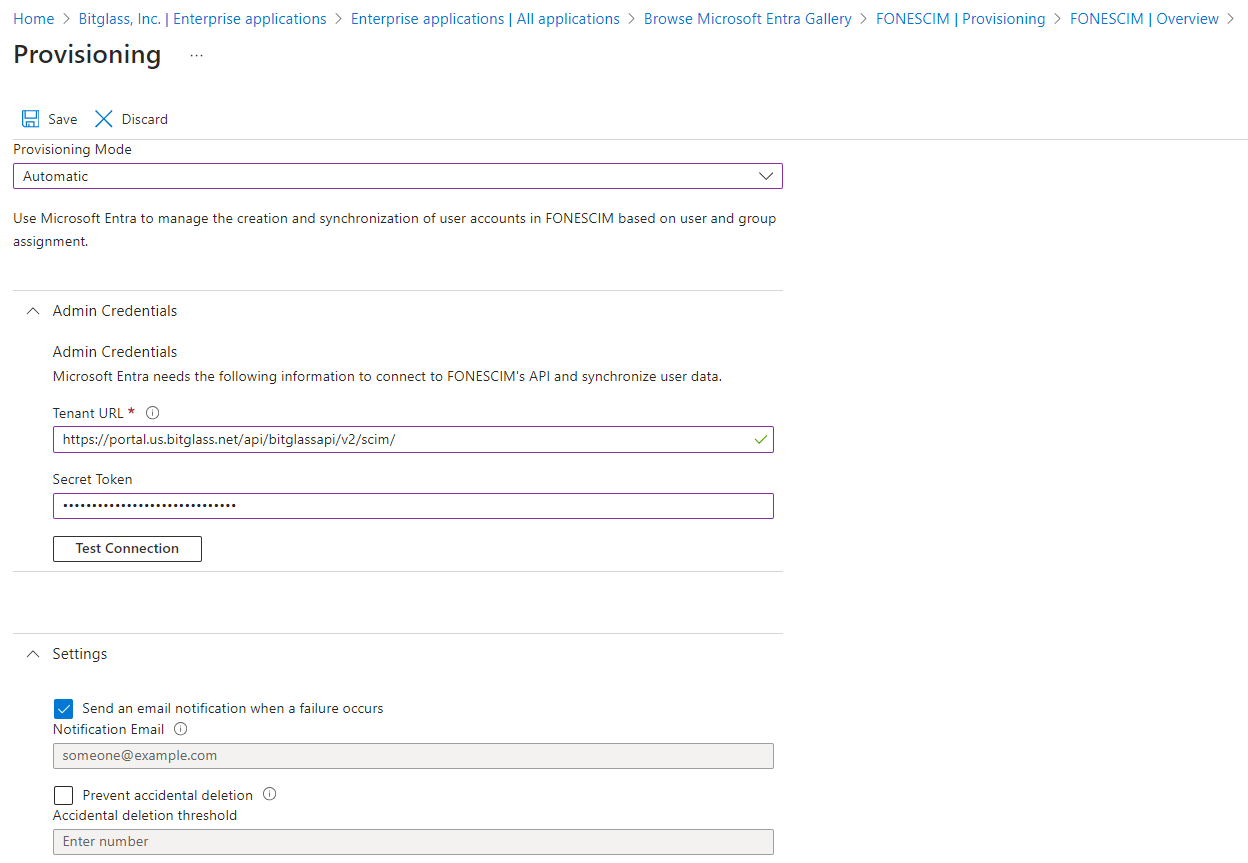
-
Once you save, configure what users or groups are going to be provisioned as well as which attributes.

To learn more about Microsoft Entra ID and SCIM, refer to the Microsoft guide.
Note: Microsoft Entra allows to map only unique Target Attribute value with each Source attribute. For example, the Target Attribute drop-down will not display the externalid option as externalid is mapped to some other source attribute by default. So, you have to remove the existing mapping for externalid and then re-map to Target Attribute.-
Under the Mappings section, there are two options (Group and Users) to select which attribute properties are used to match the users and groups in
your app. You will need to make adjustments to the User mapping fields.
- Click the Provision Microsoft Entra ID Users link to view the Attribute Mappings section and delete the following:
- Field name mail field with customappsso Attribute equal to emails[type eq "work"].value.
- Field name MailNickname with customappsso Attribute equal to externalID value.

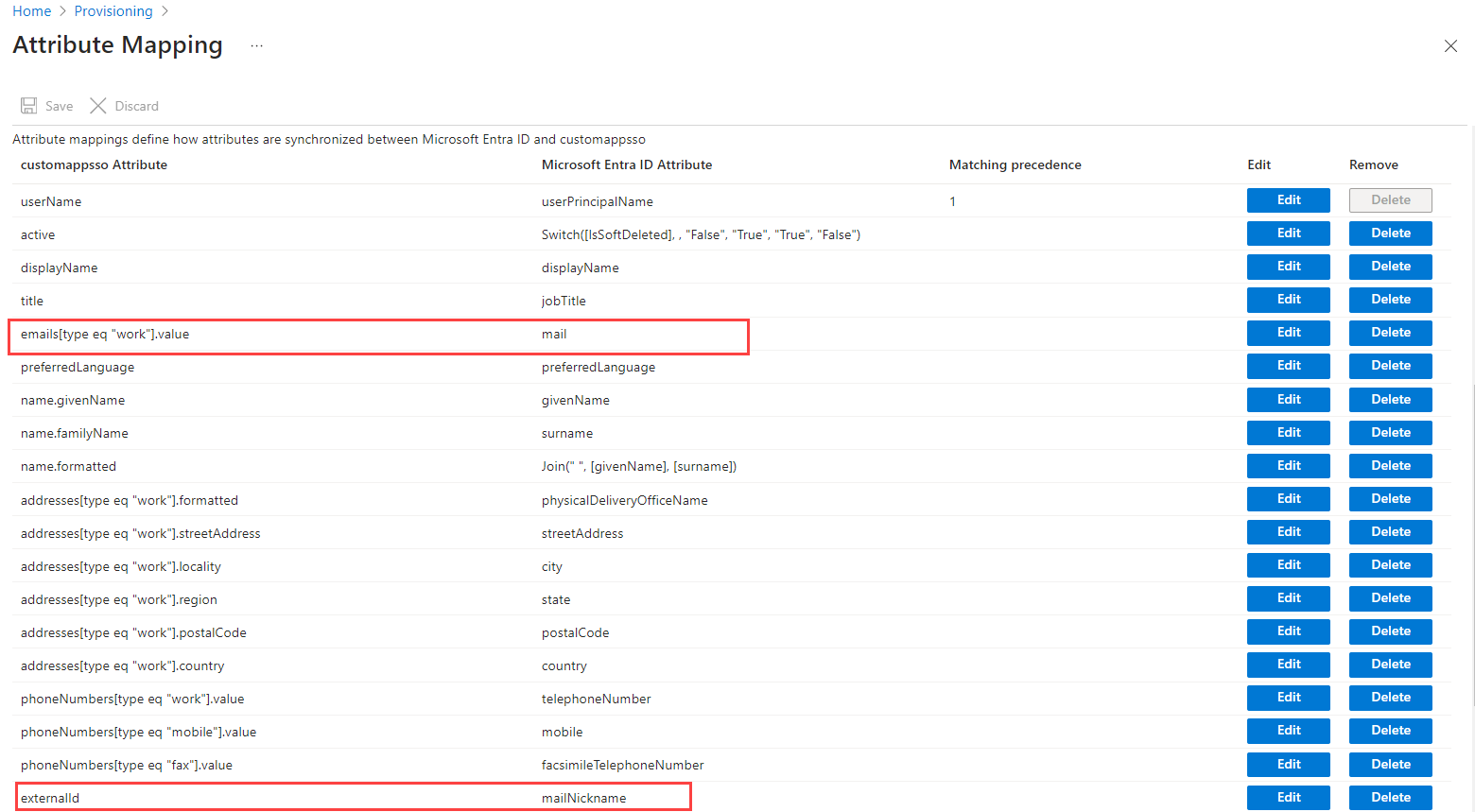
- Click Add New Mapping to add a new map and then set the Mapping Type to Direct,
Source Attribute to userPrincipalName, and Target Attribute to emails[type eq
"work"].value. Click Ok.
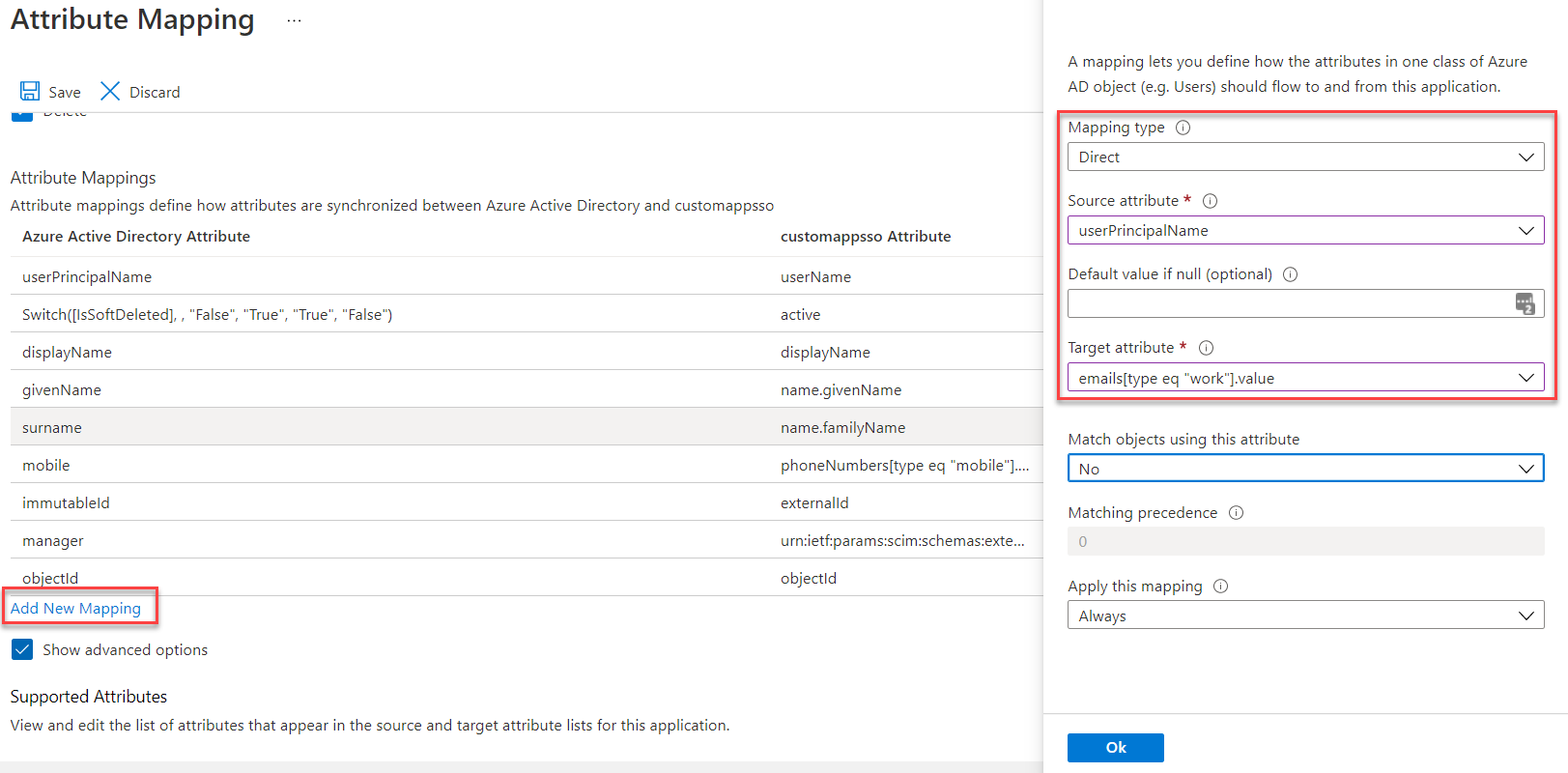
- Add another new mapping for the immutable ID with Mapping Type to Direct, Source Attribute to
ImmutableID, and Target Attribute to externalid and then click OK.
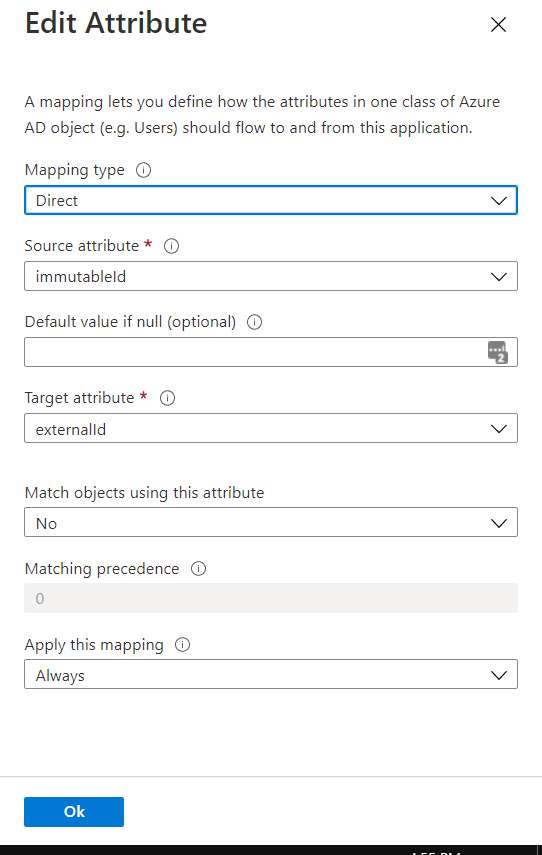
Note: The Target Attribute drop-down may not display the externalid option as externalid is mapped to some other attribute by default. So, you have to remove the existing mapping for externalid and then re-map to Target Attribute.Once that is set, you can back out to the Provisioning page.
- Click the Provision Microsoft Entra ID Users link to view the Attribute Mappings section and delete the following:
- Under the Settings section, choose which users/groups are synced over. Your two options are Sync all users and groups or Sync only assigned users and groups.
-
If you are syncing all users and groups into Forcepoint Data Security Cloud | SSE, turn the Provisioning to On and
then save the changes.
If you want to only sync specifically users/groups, skip to next step.
-
Under the Mappings section, there are two options (Group and Users) to select which attribute properties are used to match the users and groups in
your app. You will need to make adjustments to the User mapping fields.
-
To only sync over specific users or groups, you will need to add them to the application. In the left column, select Users and groups and then click
Add user/group.
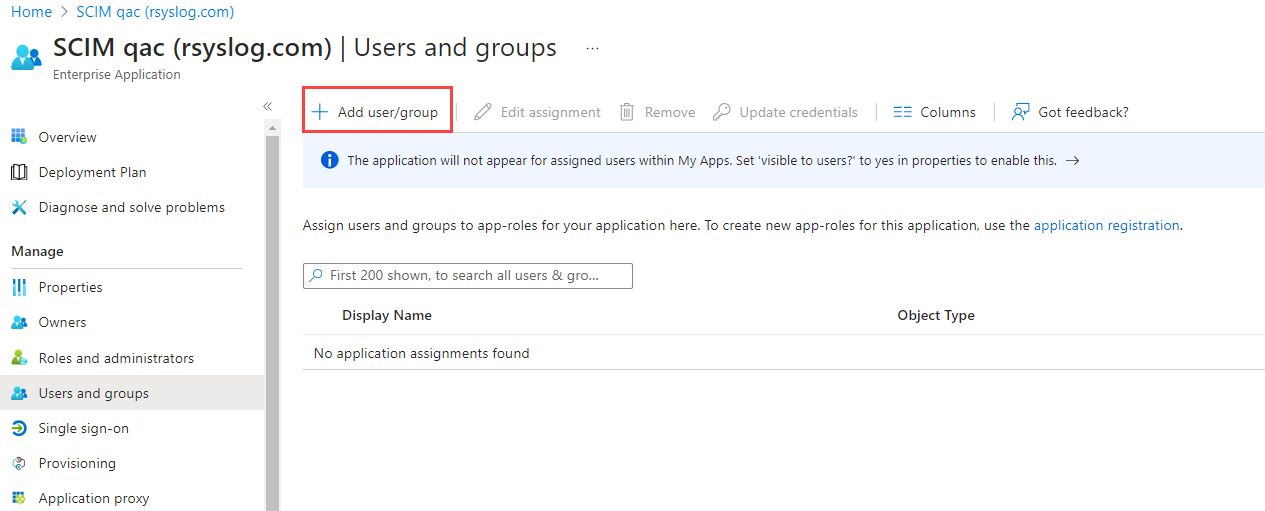
-
On the Add Assignment page, select the Users and groups option to select the specific user(s) and/or group(s) that you want to
provision. Once you have made all of your selections, click Select at the bottom.
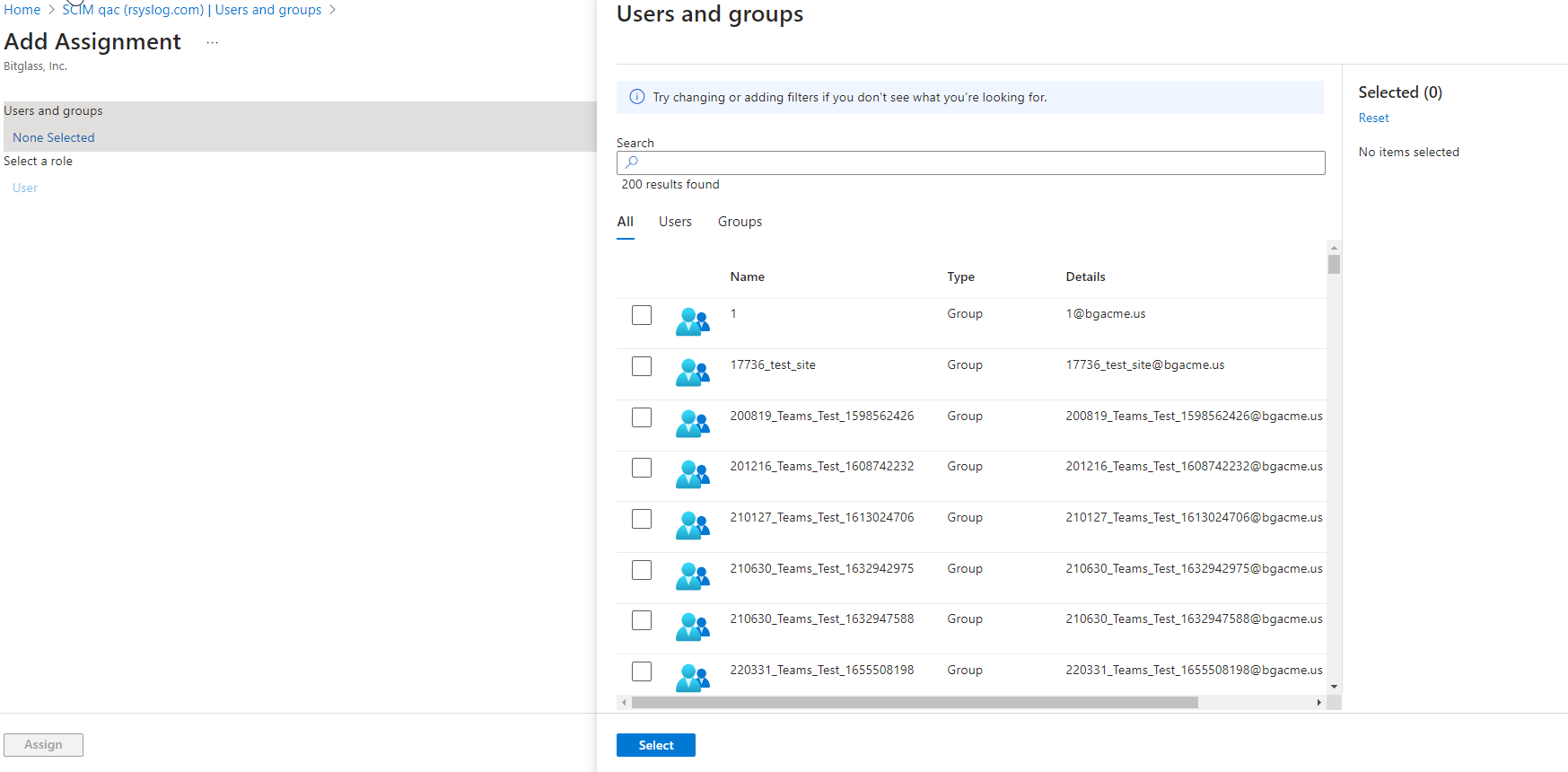
- In the Add Assignment column, click Assign at the bottom.
-
Once your users and groups are assigned, navigate back to Provisioning.

- Click Edit Provisioning.
- Under the Settings section, change the Scope to Sync only assigned users and groups.
-
Turn on Provisioning Status on and click Save.
Your users/groups will now be synced over into Forcepoint Data Security Cloud | SSE.